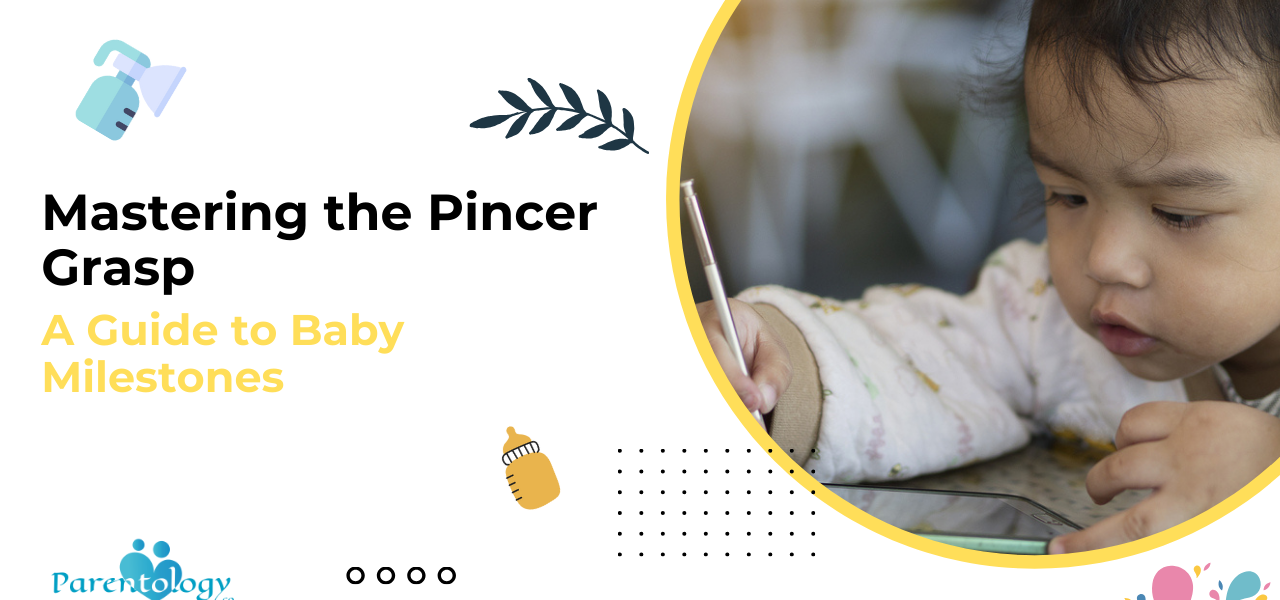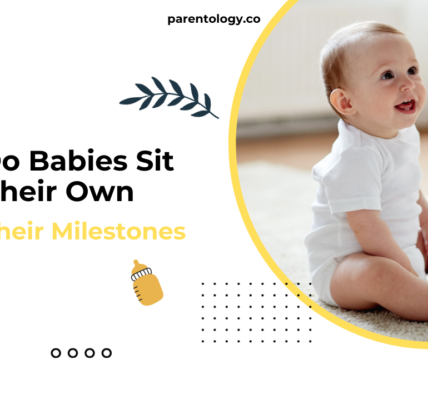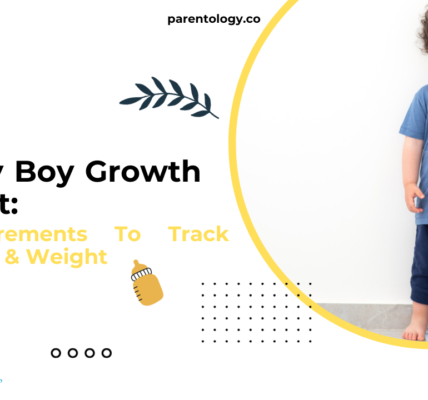Mastering the Pincer Grasp: A Guide to Baby Milestones
Welcoming a new life into the world brings endless joy and curiosity. As your baby embarks on the journey of growth, one fascinating milestone to look forward to is the development of the pincer grasp. In this comprehensive guide, we delve into the intricacies of the pincer grasp, explore the age at which it typically emerges, and provide a treasure trove of creative activities to nurture this vital skill.
Understanding the Pincer Grasp
What is the Pincer Grasp?
The pincer grasp is a fine motor skill where a baby uses their thumb and index finger to pick up small objects. This refined coordination of fingers is a significant developmental milestone.
When Does the Pincer Grasp Develop?
The pincer grasp typically begins to emerge around 8 to 12 months of age. However, each baby is unique, and some may start developing this skill earlier or later.
Stages of Pincer Grasp Development
Palmar Grasp:
In the initial stage, known as the palmar grasp, babies instinctively use their entire palm to hold onto objects. This reflexive grasp is prevalent during the early months of life.
Raking Grasp:
As babies reach around 6 to 7 months, they transition to the raking grasp. This involves using their fingers to rake objects toward them, showcasing a progression in their motor skills.
Neat Pincer Grasp:
The ultimate goal is the neat pincer grasp, typically emerging between 8 to 12 months. During this stage, babies exhibit the coordinated use of their thumb and index finger, allowing for precise manipulation of tiny items.
Activities to Encourage Pincer Grasp Development
Cheerio Challenge:
Engage your baby with a Cheerio Challenge, placing O-shaped cereal on a tray. This fun and tasty activity not only enhances the pincer grasp but also provides a sensory experience.
Finger Painting Fun:
Introduce safe, edible finger painting activities to encourage exploration of textures and colors. This not only stimulates the senses but also contributes to the refinement of fine motor skills.
Building Block Play:
Facilitate the development of the pincer grasp by introducing soft building blocks. These blocks are designed to be easy for tiny hands to grasp, promoting both hand-eye coordination and tactile exploration.
Sorting Games:
Encourage cognitive development by offering a variety of small toys for sorting. This activity not only sharpens the pincer grasp but also fosters an understanding of categorization.
The Pincer Grasp: A Window into Your Baby’s Development
As your little one embarks on the journey of mastering the pincer grasp, it’s essential to understand the broader implications of this seemingly small yet significant achievement. Let’s dive deeper into the world of fine motor skills and explore additional aspects of your baby’s growth.
Fine Motor Skills Beyond Pincer Grasp
1. Finger Dexterity:
The pincer grasp lays the foundation for enhanced finger dexterity. As your baby refines this skill, you’ll notice increased control in activities like pointing and gesturing.
2. Writing Readiness:
The development of the pincer grasp is a precursor to future writing skills. The ability to hold and manipulate small objects sets the stage for later activities involving pencils and crayons.
3. Self-Feeding Independence:
Encourage self-feeding by introducing finger foods that require the use of the pincer grasp. This not only fosters independence but also strengthens hand muscles.
Tips for Pincer Grasp Enrichment
1. Patience and Encouragement:
Be patient as your baby navigates the stages of pincer grasp development. Offer encouragement through positive reinforcement and celebrate their efforts.
2. Varied Textures and Shapes:
Provide a variety of textured toys and objects with different shapes and sizes. This sensory exploration aids in refining the pincer grasp.
3. Outdoor Exploration:
Take advantage of outdoor environments where natural elements like sand, leaves, or pebbles offer diverse tactile experiences, promoting fine motor skills.
Pincer Grasp Challenges and Solutions
1. Overcoming Frustration:
It’s common for babies to experience frustration during the learning process. Create a supportive environment, offering assistance without taking over the task entirely.
2. Seeking Professional Guidance:
If you notice persistent challenges or delays in fine motor development, consult with a pediatric occupational therapist for personalized guidance.
Parental Involvement and Bonding
1. Sensory Playtime:
Engage in sensory play activities that involve the pincer grasp. From squishy playdough to picking up small objects, these activities create joyful bonding moments.
2. Storytime Interaction:
Incorporate interactive elements into storytime, such as letting your baby turn pages or point to objects. This not only enhances the pincer grasp but also fosters a love for books.
Celebrating Pincer Grasp Milestones
1. Capture Milestone Moments:
Document the journey of your baby’s pincer grasp development through photos and videos. These memories will become cherished reminders of their growth.
2. Commemorative Keepsakes:
Consider creating keepsakes, such as handprint art or personalized crafts, to celebrate your baby’s milestones. These tangible memories add a special touch to their developmental journey.
Incorporating Pincer Grasp into Daily Routines
1. Dressing Independence:
Encourage your baby to participate in simple dressing activities, like holding small clothing items. This promotes fine motor skills while fostering a sense of accomplishment.
2. Mealtime Exploration:
Transform mealtime into a pincer grasp adventure by introducing a variety of finger foods. This not only enhances motor skills but also introduces new flavors and textures.
The Evolution of Fine Motor Mastery: Pincer Grasp and Beyond
Pincer Grasp and Cognitive Development
1. Object Permanence:
The development of the pincer grasp coincides with the understanding of object permanence. As your baby learns to grasp and manipulate objects, they also grasp the concept that things exist even when out of sight.
2. Spatial Awareness:
Fine motor skills, including the pincer grasp, contribute to spatial awareness. This awareness becomes vital as your baby explores the world around them.
Pincer Grasp and Speech Development
1. Mouth Coordination:
Believe it or not, the pincer grasp plays a role in speech development. The refined control of finger muscles contributes to oral coordination, a crucial aspect of language development.
2. Communication Skills:
As your baby gains mastery over the pincer grasp, they also enhance their ability to communicate. Pointing, gesturing, and exploring objects actively contribute to early communication skills.
Introducing Pincer Grasp in Educational Play
1. Montessori-inspired Activities:
Incorporate Montessori-inspired activities that encourage the pincer grasp. From transferring objects with tweezers to sorting activities, these educational games nurture fine motor skills.
2. Sensory Bins:
Create sensory bins with various textures and shapes. Allow your baby to explore the contents using their pincer grasp, fostering sensory development alongside fine motor skills.
Pincer Grasp and Social Interaction
1. Playdates and Sharing:
Engage your baby in playdates to promote social interaction. Sharing small toys during these interactions enhances their pincer grasp while fostering social skills.
2. Parallel Play:
Encourage parallel play, where babies play alongside each other. This type of play enhances the pincer grasp and introduces the concept of shared activities.
Pincer Grasp and Independence
1. Self-Feeding Milestones:
As your baby masters the pincer grasp, self-feeding milestones come into play. Introduce age-appropriate finger foods, empowering your baby to feed themselves.
2. Dressing Skills:
Support your baby in developing dressing skills. Activities like pulling off socks or placing small items into pockets contribute to the refinement of the pincer grasp.
Pincer Grasp in the Digital Age
1. Interactive Apps:
While screen time should be limited, there are educational apps, which are designed to enhance fine motor skills, including the pincer grasp. Choose apps that offer interactive touch elements.
2. Supervised Tablet Time:
If introducing tablets, ensure supervised and limited usage. Choose apps that engage your baby’s fine motor skills through tapping and dragging.
Celebrating Pincer Grasp Achievements
1. Pincer Grasp Certificate:
Create a “Pincer Grasp Master” certificate to celebrate your baby’s achievements. Personalized certificates make for memorable keepsakes.
2. Family Celebrations:
Involve the entire family in celebrating baby’s Pincer grasp achievements. Whether it’s a small gathering or a virtual celebration, collective joy adds to the significance of the milestone.
Continued Observations and Support
1. Pediatrician Check-ins:
Schedule regular check-ins with your pediatrician to discuss developmental milestones, including the pincer grasp. Address any concerns promptly.
2. Parental Support Groups:
Join parental support groups to share experiences and gain insights into fostering developmental milestones. Learning from others can be invaluable.
FAQs About Pincer Grasp Development
Q1: Is it concerning if my baby doesn’t show the pincer grasp by 12 months?
A1: Not necessarily. Developmental milestones vary, but if you have concerns, consult your pediatrician.
Q2: Can I encourage pincer grasp development through play?
A2: Absolutely! Play-based activities, like those involving small toys or finger foods, can enhance the pincer grasp.
Q3: Are there warning signs of developmental issues related to the pincer grasp?
A3: Persistent difficulty with grasping, and holding objects, or delays in fine motor skills may warrant professional evaluation.
Q4: Should I be worried if my baby skips the raking grasp stage?
A4: Not necessarily. Babies may progress through stages at different rates. Consult with your pediatrician if you have concerns.
Q5: How can I create a safe environment for pincer grasp activities?
A5: Ensure that objects are age-appropriate and free from choking hazards, and always supervise your baby during play.
Q6: Can premature babies achieve the pincer grasp milestone on time?
A6: Premature babies may reach milestones at their adjusted age. Consult with your pediatrician for personalized guidance.
Q7: Are there specific toys designed to enhance pincer grasp?
A7: Yes, look for toys with small parts that encourage picking up and manipulating objects with the thumb and forefinger.
Q8: What role does hand-eye coordination play in pincer grasp development?
A8: Hand-eye coordination is crucial, as it allows babies to accurately bring their fingers to an object they wish to grasp.
Q9: Can I encourage pincer grasp through daily routines?
A9: Absolutely! Incorporate pincer grasp activities into routines like mealtime, where babies can pick up small food items.
Q10: How can I celebrate my baby’s first successful pincer grasp?
A10: Capture the moment! Take photos or videos to celebrate this exciting developmental milestone.
Conclusion: Nurturing Little Fingers, Cultivating Big Achievements
In the enchanting journey of parenthood, witnessing your baby master the pincer grasp is a testament to their growing abilities. Embrace the joy of creative activities that not only foster this fine motor skill but also create cherished moments of connection. For more parenting insights and developmental milestones, explore Parentology and continue celebrating the remarkable journey of your little one’s growth.
Infographics-





